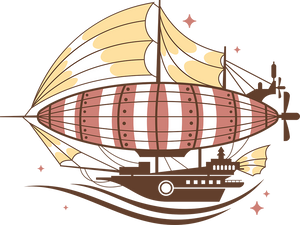BAS Health Series: Myths and Realities of the Things We Eat, Article 2 of 6
If you love food, you love salt.
Every gourmet cooking show I’ve ever watched says the same thing — “Don’t be afraid of salt!” And they’re right. If you’ve ever cooked at home, you know salt isn’t just a seasoning; it’s a miracle worker. It brings food to life, unlocks flavor, and turns a good meal into a great one.
But if you grew up in the 80s or you listen to the news, salt sounds like a health crisis in a shaker — blamed for high blood pressure, heart disease, and everything in between. Then, it magically helps with mood imbalances. One headline says to cut it completely; another says we need more of it. So which is true?
The reality is salt is essential. The problem isn’t salt itself, it’s how much and where we get it.
Myths
-
Myth 1: Salt is bad for everyone.
Not exactly. Some people are “salt-sensitive,” meaning sodium directly raises their blood pressure, while others aren’t affected nearly as much¹. Cutting all salt can actually be harmful if you lose essential electrolytes. -
Myth 2: Sea salt or Himalayan salt are healthier.
It definitely looks cooler. From a nutritional standpoint, pink, gray, or white, all salt is still about 98% sodium chloride². Trace minerals in fancy salts exist in such small amounts they don’t impact health significantly. -
Myth 3: You can taste when you’ve had too much.
Unfortunately, your taste buds adapt quickly. Over time, you crave more to get the same flavor hit³. That’s part of why packaged and restaurant foods are so addictive.
The Science
Your body needs about 500 mg of sodium per day to function — that’s less than a quarter teaspoon⁵. The average American gets 3,400 mg per day. Salt, or sodium chloride, plays a crucial role in your body’s chemistry:
-
Fluid balance: Sodium helps regulate how much water stays inside or outside your cells.
-
Nerve function: It’s vital for sending electrical impulses between nerves⁴.
-
Muscle contraction: Sodium and potassium work together to make every movement possible.
-
Hydration: Without sodium, you can drink water all day and still be dehydrated.
The Different Types of Salt – Does It Matter?
As someone who loves to cook, I’ve collected more types of salt than I’d like to admit — Himalayan pink, French gray, smoked sea salt, finishing salt (a must for plate presentation), kosher salt, even black lava salt from Hawaii. They’re all deliciously different in texture, flavor, and aroma.
But are they actually healthier? Let’s take a closer look:
|
Type of Salt |
Description |
Health Differences |
|
Table Salt |
Fine-grained, often iodized (to prevent deficiency). |
Contains iodine, which supports thyroid health. May have anti-clumping additives. |
|
Sea Salt |
Evaporated ocean water, coarser texture. |
Contains trace minerals like magnesium, calcium, and potassium — but in trace amounts. |
|
Himalayan Pink Salt |
Mined in Pakistan, known for color and minerals. |
Contains trace iron and magnesium; nutritionally similar to table salt. |
|
Kosher Salt |
Flaky, easy to control for seasoning. |
Preferred by chefs; same sodium content per gram, but less dense by volume. |
|
Celtic or French Gray Salt |
Moist and mineral-rich from clay-lined ponds. |
Contains trace minerals and lower sodium by volume due to moisture. |
So, the flavors vary, but your body sees them all as sodium. The difference is in taste, not chemistry.
If you love salt like I do, the trick is to enjoy quality over quantity. Use good salt to finish a dish rather than loading it into every step of the process.
The Fast-Food Trap – Hidden Sodium Everywhere
Most of our sodium doesn’t come from the salt shaker — it comes from the supermarket and drive-thru window.
About 70% of the sodium in the American diet comes from packaged or restaurant foods⁶. Even foods that sound healthy can be salt bombs:
-
A turkey sandwich can have 1,500 mg of sodium.
-
A single bowl of canned soup can exceed your daily limit.
-
“Low-fat” frozen meals often double up on salt for flavor.
It’s not about avoiding salt — it’s about knowing where it hides. I’d rather salt my own food with sea salt than let a factory do it for me.
Pros and Cons
Pros:
-
Essential for nerve and muscle function.
-
Helps maintain hydration and fluid balance.
-
Improves flavor and encourages home cooking (which is almost always healthier than fast food).
Cons:
-
Excess sodium increases water retention and blood pressure in sensitive people⁷.
-
Can strain kidneys over time if intake remains high⁸.
-
Processed foods pack massive hidden amounts.
Did You Know? If Americans cut sodium intake by just 1,000 mg per day, it could prevent 120,000 new cases of heart disease every year⁹.
Around the World – Why High-Salt Diets Don’t Affect Everyone Equally
While America struggles with processed sodium overload, some countries with salty traditional diets have lower heart disease rates — a puzzle that fascinates nutrition scientists.
-
Japan: The Japanese diet is famously high in sodium — miso soup, soy sauce, pickled vegetables — yet Japan has one of the world’s lowest heart-disease mortality rates¹⁰. The difference? They eat potassium-rich vegetables, seafood instead of red meat, and exercise regularly. Potassium helps balance sodium’s effect on blood pressure.
-
Iceland and Nordic countries: Cured fish and smoked meats are staples, but meals are balanced with whole grains and low-processed foods. Their overall sodium intake is similar to the U.S., but obesity and processed snack consumption are far lower¹¹.
-
Mediterranean countries: Even with olives, cheese, and salted fish, these diets pair sodium with heart-protective fats, fiber, and polyphenols — nutrients that reduce inflammation.
The takeaway? It’s not just about the salt — it’s about the company it keeps.
When sodium is part of a balanced, whole-food diet, it behaves very differently than when it’s wrapped in plastic, deep-fried, and eaten on the go.
The Truth
Most nutrition experts recommend sodium intake of to 2,300 mg per day — about one teaspoon of salt¹².
If you’re salt-sensitive, older, or managing high blood pressure, aim closer to 1,500 mg. But don’t go too low. Low sodium can cause dizziness, muscle cramps, and confusion.
My Opinion
Salt is too good. A pinch of flaky sea salt on grilled vegetables, a little Himalayan pink salt on dark chocolate — those are moments of pure joy. Embrace that it’s essential but it should be used in moderation.
The secret isn’t cutting out salt — it’s cutting out junk. Season your food with purpose, cook with fresh ingredients, and let the salt enhance, not hide, the flavor.
So yes, I love salt. And I plan to keep using it — just wisely, intentionally, and always with gratitude for what it does to a great meal.
The Myths and Realities of the Things We Eat
By Ken York, President of Benefit Airship
As someone who loves food — the smell of a sizzling pan, a great cup of coffee, a perfectly cooked steak — I’m fascinated by what we eat and how it affects us. I also get frustrated by the constant noise around it. One day butter is a superfood, the next it’s poison. Coffee adds years to your life — unless it’s silently killing you. Every week seems to bring a new diet, miracle supplement, or shocking study that contradicts the last one.
I’ve spent years researching health and wellness — both personally and professionally — and I’ve learned that truth in nutrition is rarely simple. What’s good for one person might not be for another. But there is science behind how these foods work, and it’s not as mysterious as the headlines make it seem.
Sources
-
Harvard Medical School, Sodium Sensitivity and Blood Pressure
-
American Heart Association, Sea Salt vs. Table Salt
-
Journal of Nutrition, Adaptation to Salt Taste
-
National Institutes of Health, Sodium and Nerve Function
-
CDC, Sodium Intake Recommendations
-
U.S. Department of Agriculture, Sources of Dietary Sodium
-
Mayo Clinic, Hypertension and Sodium Intake
-
Kidney Foundation, Salt and Kidney Health
-
CDC, Public Health Impact of Sodium Reduction
-
World Health Organization, Diet and Heart Health: Japan Study (2024)
-
European Journal of Preventive Cardiology, Nordic Diet and Cardiovascular Risk
-
World Health Organization, Global Sodium Guidelines (2024)




